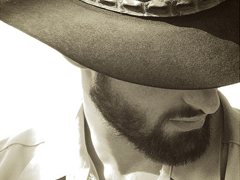
Farming men and women and agricultural workers spend much of their time working outdoors. Not wearing sun protection while outside can increase the risk of skin cancer. Skin cancer can be a life-threatening condition and protecting skin from Ultraviolet (UV) radiation should be taken very seriously.
People who work outdoors get up to10 times more sun exposure than indoor workers. Australia has some of the highest levels of UV radiation and one of the highest rates of skin cancer in the world, accounting for over 80% of all new cases of cancer diagnosed in Australia each year (Cancer Council Australia, 2020).
Skin Cancer – risk factors
Common risk factors for skin cancer include fair skin, many moles and freckles, a personal or family history of skin cancer, excessive UV exposure and solarium use.
Unlike the light or heat from the sun, which we can see and feel, your senses cannot detect UV radiation, so you won’t notice skin damage until it has been done. Some UV radiation from the sun is important for bone and muscle health, but too much UV can cause sunburn, premature ageing of the skin, and damage to the eye. UV levels are affected by the time of day, time of year and cloud coverage. To help prevent skin cancer and high UV exposure try to do outside work when UV levels are at their lowest.
To find out more information on skin cancer risk factors visit Better Health Channel
Skin Cancer – prevention
Fortunately, most skin cancers are preventable. Being SunSmart and protecting your skin using these five sun protection steps is an effective way to reduce your risk of developing skin cancer:
Slip on a long sleeve shirt and long pants
Slop on SPF 50+ sunscreen to all skin not protected by clothing
Slap on a broad brim hat
Seek shade between 11am – 3pm
Slide on 100% UV protective sunglasses
Where possible try to avoid outdoor tasks in the middle of the day, or when UV levels are highest. Download the SunSmart weather app and check out the UV forecasts from the weather bureau on the Farmer Health weather pages.
Check your skin (including friends and family skin) regularly for any changes in moles or sunspots. Take photographs if this helps. Look for any changes in shape, colour and size. If you notice changes or are concerned take action and see your GP for a skin check or request a review with a skin specialist.
To find out more about this topic go to Better Health Channel
Fast facts:
Skin cancer – risks and early signs
- Farmers spend a lot of time outdoors; this can increase the risk of skin cancer.UV radiation is dangerous. It is unlike sunlight as it can damage skin without us realising.
- Check your skin regularly for any changes, especially moles or freckles that change.
- Have an annual skin review with your GP or skin specialist.
- See your GP if you notice any skin changes between skin reviews,
- Be SunSmart: protect your skin from UV radiation and remember to slip, slop, slap, seek shade and slide on sunglasses during sun protection times.
References used for this topic
More information:
Cancer Council Australia
Causes of skin cancer
Sunsmart Victoria
Protecting your farm’s most important asset. You. (PDF)
Sunsmart Victoria
Checking for skin cancer
Clinical care:
Cancer Council Australia
Skin cancer clinical guidelines
Research & reviews:
Preventative Medicine Reports
Farmers sun exposure, skin protection and public health campaigns: An Australian perspective
Rural and Remote Health
Are farmers more likely to develop skin cancer? RRH: Rural and Remote Health article: 5711 – Are farmers more likely to develop skin cancer?[
American Association for Cancer Research
Long-term ultraviolet flux, other potential risk factors, and skin cancer risk: a cohort study
Journal of American Academy of Dermatology
Screening, early detection, and trends for melanoma: Current status (2000-2006) and future directions
Journal of American Academy of Dermatology
Rural-urban differences in behaviours to prevent skin cancer: An analysis of the Health Information National Trends Survey
|
|